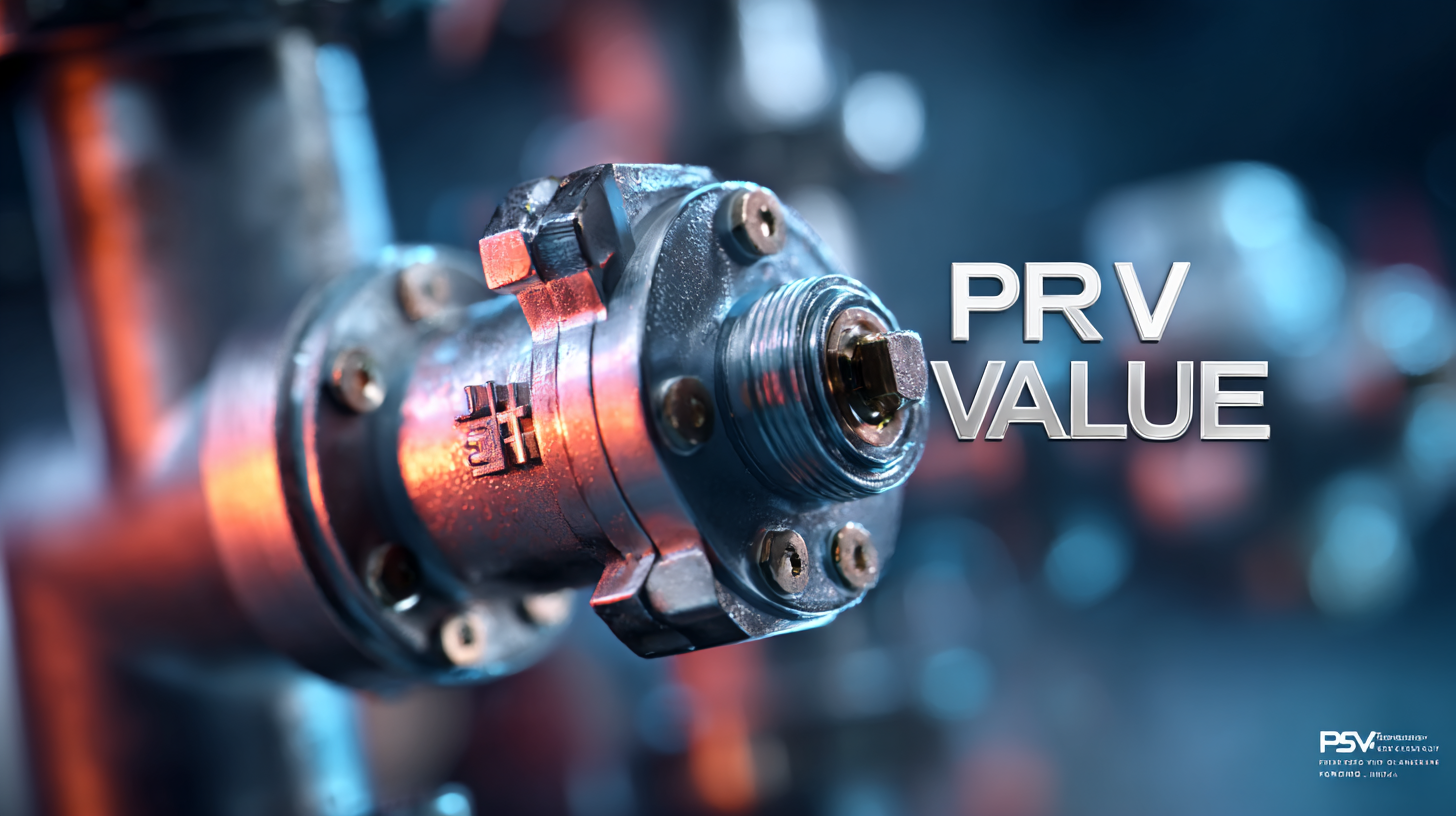Innovations in Best Pressure Valve Technology Shaping the Future of Industry by 2025
In the rapidly evolving landscape of industrial technology, pressure valves have emerged as critical components driving efficiency and safety across various sectors. As we journey towards 2025, innovations in pressure valve technology are poised to redefine standards and performance, making them indispensable in today’s manufacturing processes. Originating from China’s leading factories, these advancements are not only enhancing product reliability but also fostering global trust among industry players. This blog delves into how the latest developments in pressure valve design and functionality are shaping the future of industry, paving the way for smarter, more sustainable operations that meet the demands of an ever-changing market.

Join us as we explore the transformative impact of cutting-edge pressure valve technology and its role in securing a more efficient industrial future.
Understanding the Importance of Quality Pressure Valves in Modern Industry
In today's rapidly evolving industrial landscape, the importance of high-quality pressure valves cannot be overstated. These vital components ensure safety, efficiency, and reliability in various processes, from manufacturing to oil and gas extraction. A well-designed pressure valve can prevent catastrophic failures and significant downtime, making it an essential investment for any industry seeking to optimize performance.
Tip: When selecting pressure valves, consider the materials used in their construction. High-quality materials like stainless steel or specialized alloys can enhance durability and corrosion resistance, prolonging the life of the valve and minimizing maintenance costs.
Moreover, understanding the specific applications and environmental conditions in which pressure valves operate is crucial. This knowledge allows for the selection of valves that can withstand high pressures, extreme temperatures, or corrosive substances. Engaging with experienced suppliers who provide tailored solutions can significantly enhance operational efficiency and safety.
Tip: Regularly inspect and test pressure valves to ensure they function correctly. Implementing a scheduled maintenance program helps identify potential issues before they lead to significant failures, ultimately saving time and resources while ensuring compliance with safety regulations.
Key Indicators for Assessing Pressure Valve Supplier Reliability and Performance
In the ever-evolving landscape of industrial technology, assessing the reliability and performance of pressure valve suppliers is crucial. Companies aiming to enhance operational efficiency must focus on specific key indicators that can significantly influence their supply chain decisions. These indicators include the supplier's track record, product quality certifications, and the responsiveness of their customer service. A supplier with a proven history of delivering durable and effective pressure valves will typically provide a solid foundation for long-term partnerships.
Tip: When evaluating potential suppliers, consider conducting thorough background checks to verify their reliability. Analyze past performance data and reach out to existing clients to gauge satisfaction levels. This proactive approach ensures that you are making informed decisions based on real-world insights.
Another essential aspect to consider is innovation in product offerings. Suppliers that invest in advanced technologies and continuously improve their products demonstrate a commitment to industry standards. Look for those who regularly participate in research and development initiatives, as this indicates their readiness to adapt to the changing technological landscape.
Tip: Attend industry conferences or seminars where suppliers showcase their latest innovations. This firsthand exposure can provide valuable insights into which companies are leading the way in pressure valve technology.

The Role of Cutting-Edge Materials in Enhancing Pressure Valve Efficiency
The advancement of pressure valve technology is significantly influenced by the introduction of cutting-edge materials. Innovative materials such as advanced composites and high-performance alloys are not only enhancing the durability of pressure valves but also improving their efficiency. These materials offer exceptional resistance to corrosion and wear, which is particularly crucial in demanding industrial environments. By integrating these modern materials, manufacturers are able to produce valves that maintain optimal performance under high pressure and temperature conditions, ultimately leading to increased reliability and reduced maintenance costs.
When selecting pressure valves for specific applications, consider the material properties that will best suit your requirements. For instance, materials with high tensile strength can withstand greater pressures, while lightweight materials may enhance ease of installation and operation. Additionally, staying abreast of the latest developments in material technology can provide businesses with a competitive edge, ensuring that their systems are equipped with the most efficient and reliable pressure control solutions available.
It’s essential to routinely evaluate the performance of your pressure valves and consider upgrades or replacements with newer materials. Regular inspections and understanding the wear patterns can help identify when it’s time to adopt innovative materials that could significantly enhance efficiency and extend the lifespan of your systems. By making informed decisions regarding material selection, industries can pave the way for a more sustainable and efficient future in pressure management technology.
Innovations in Best Pressure Valve Technology by 2025
This chart demonstrates the efficiency of various cutting-edge materials used in pressure valve technology as projected for 2025. The data highlights the increasing effectiveness of materials like titanium alloys and stainless steel in enhancing valve performance across various industries.
Evaluating Supplier Certifications and Standards: A Critical Step in Procurement
In the rapidly evolving industrial landscape, the procurement process is undergoing a significant transformation, especially in the area of pressure valve technology. Supplier certifications and standards have become critical elements in ensuring reliability and performance. According to a recent report by the International Society for Automation, nearly 70% of procurement managers cite supplier certification as a key factor influencing their decision-making process. This statistic underscores the necessity of understanding supplier qualifications and compliance with industry standards, such as ISO 9001 and ATEX, which ensure product safety and reliability.
Moreover, the demand for high-performance pressure valves is expected to grow by over 5% annually through 2025, driven by advancements in manufacturing and the increasing complexity of industrial applications. Ensuring that suppliers adhere to established standards not only assures quality but also minimizes operational risks. A study from the American Society of Mechanical Engineers notes that companies with robust supplier evaluation processes can reduce procurement-related failures by up to 30%. Therefore, evaluating supplier certifications is not just a procedural step; it is essential for maintaining competitive advantage in an industry where precision and reliability are paramount.

Projected Market Growth for Pressure Valve Technology: Statistics and Trends by 2025
The global pressure valve technology market is poised for significant growth by 2025, driven by increasing industrial automation and stringent safety regulations across various sectors. According to recent forecasts, the market is expected to witness a remarkable rise, propelling the total market value to impressive figures. This demand is particularly influenced by the advancements in valve technologies, which enable manufacturers to enhance operational efficiency and reduce downtime.
As businesses look to meet the rising demand for innovative solutions, investing in the latest pressure valve technologies can yield substantial competitive advantages. Employing smart valves with integrated sensors and automation capabilities can optimize processes and improve responsiveness to environmental changes. Companies should focus on identifying suppliers that prioritize Research & Development to ensure they harness cutting-edge features.
Tips: When exploring options in pressure valve technology, consider the scalability of the solutions. Future-proofing investments by choosing modular systems can allow for easier upgrades as technology evolves. Also, continuous training for staff on the latest valve technologies can enhance operational effectiveness and safety in the workplace.
